Bulk Pricing
8 Port USB 2.0 Over IP Network Device Server Hub w/ Type-C & Type-A Ports
+12V DC Input | Mountable | 480 Mbps
- Network Device Sharing: USB devices connected to the 8-Port USB 2.0 Over IP Network Hub can be made available to remote clients over LAN. The USB 2.0 Over IP Network 4-Port Hub shares USB devices over the TCP/IP network.
- High Speeds: This USB hub is 2.0 compliant, ensuring fast 480Mbps data transfer speeds for devices shared over the network. It supports high speed and full speed which enables it to be compatible with USB 1.1.
- USB Port Variety: Connect multiple Type-A and Type-C devices simultaneously to share over the network.
- LED Indicators: Power
- LAN Port: 1 RJ45 Connector
- Downstream: 4 USB Type-A ports, 4 USB Type-C ports
- Power Connector: 3-Pin Terminal Block Power Adapter
- Mounting Options: Desktop, Wall, Surface, & DIN Rail
$199.95
In stock
Volume Pricing
| Units | Discount | Price |
|---|---|---|
| 1 - 4 | — | $199.95 |
| 5 - 11 | 2 % | $195.95 |
| 12 - 24 | 5 % | $189.95 |
| 25 - 49 | 7 % | $185.95 |
| 50+ | 10 % | $179.96 |
Product Documentation
Software & Drivers
Quick Links:
Description
Introduction:
The US-S4PLUS USB 2.0 Over IP Network 8-Port Hub is a network-based USB Server for connecting four USB Type-A and four USB Type-C devices directly to the 10/100Mbps Ethernet network running TCP/IP. By adding this USB Server to LAN, you can network-enable the USB devices and break the traditional five meter (16.5 feet) USB cabling distance limitation. By this implementation, USB-A and USB-C devices connected to the 8-Port USB 2.0 Over IP Network Hub can be made available to remote clients over LAN. The USB 2.0 Over IP Network 8-Port Hub shares USB devices over the TCP/IP network, Share any USB device with others by using USB 2.0 networking hub.
Connect to any USB device anywhere on TCP/IP network. The USB to Ethernet Connector ensures hot Plug-and-Play installation including support for Isochronous devices. Share your USB device with others over local network using a single application. The USB 2.0 Over IP Network Hub will Auto-connect to new USB devices whenever they are plugged in. It also features network traffic encryption for sharing among secure devices.
Features:
- Allows USB Devices to be used and shared by client PCs over LAN.
- Supports wide variety of USB Type-A and Type-C devices.
- Supports Printer Auto Connect while sharing the printer to different client PCs.
- Compatible with bulk, interrupt and isochronous type USB devices.
- Provides Plug and Play function same as on board USB port.
- Access and monitor USB devices over a User-Friendly Application interface.
- Allows USB Devices to be used and shared by client PCs over LAN.
- Supports wide variety of USB devices.
- USB port supports over current protection.
- The NetUSB USB Server provides: RJ45 Ethernet to 8 USB ports.
- Supports IP addressing as Static or by DHCP.
- LEDs for system/Ethernet/USB ports.
- Field-upgradeable firmware.
- Supports Reset button for system reset.
- Supports Default button for configuration to default setting.
Specifications:
- The NetUSB USB Server provides: RJ45 Ethernet to 8 USB ports.
- 8 USB 2.0 High Speed Ports Type-A and Type-C up to 480Mbps speed.
- Full 500mA power provided to each USB port.
- 10BaseT/100BaseTx Fast Ethernet support.
- Input Voltage: +12V DC
- Compatible with Windows 7 / 8 / 10 / 11
- Regulatory approvals: FCC Class B (DoC) and CE.
- RoHS compliant.
- Operating Temperature: 0 to 55 °C (32 to 131 °F)
- Operating Humidity: 5 to 95% RH
- Storage Temperature: -20 to 75 °C (-4 to 167 °F)
- Safety Approvals: CE, FCC
Supported USB Devices:
- Cameras
- Scales
- Barcode Scanners
- Cash Registers
- IO Devices
- Scanners
- Webcams
- USB Hard Drives
- USB RAID
- USB Storage
- MULTI Function Printer Devices
- Multifunctionals
- Handhelds
- USB to Serial RS-232/422/485 Cables
- Card Readers
- Fingerprint Readers
*Surface Mounting screws not included.
Specifications
Product Specifications
| Power |
| ||||||||||
|---|---|---|---|---|---|---|---|---|---|---|---|
| Compliance |
| ||||||||||
| Physical Characteristics |
| ||||||||||
| Software |
| ||||||||||
| Environmental |
| ||||||||||
| Product Information |
| ||||||||||
| Hardware |
| ||||||||||
| Performance & Safety |
| ||||||||||
| Network |
| ||||||||||
| Other Data |
|
Reviews (1)
1 review for 8 Port USB 2.0 Over IP Network Device Server Hub w/ Type-C & Type-A Ports
Add a review
Support
Product Documentation & Drivers
Product Documentation
Software & Drivers
Need drawings, CAD files, or other compliance documentation? Click HERE
Relevant Articles & F.A.Q.
Relevant Articles
Product F.A.Q.
View frequently asked product questions below. Still need help? Reach out!
-
Can the hub be used without a power supply?
View AnswerIn some cases, yes. USB peripherals that only require low power (i.e. keyboards & mice) can be used without a power adapter. Power in this case is drawn from the host’s USB port.
When high-power USB peripherals are used, a power supply for the USB hub may be required. In other cases, the USB peripheral may require their own power adapters, in this case, a power supply for the hub may not be required. Without ample power though, the USB hub or connected peripherals may not operate correctly. It is recommended to use an included power supply when possible.
-
After waking up from sleep mode, my computer/host no longer recognizes my USB device.
View AnswerIf the USB device does not function properly after your computer or host has been in sleep mode, it is likely that Windows turned off the USB Root hub in order to save power.
To prevent this, follow the steps below (depending on your operating system).
Windows 10 / 8
- On your keyboard, press the Windows key + X and select Control Panel.
- Click Hardware and Sound, then click Power Options.
- Click Change plan settings for the plan you want to change.
- Click Change advanced power settings.
- Click the plus sign (+) next to “USB settings” and “USB selective suspend setting” to expand the options and change the setting to Disabled.
- Click OK to apply the setting.
Note: You may need to disconnect and re-connect your USB device after applying these settings.
Windows 7 / Vista
- Click the Start button and select Control Panel.
- Click Hardware and Sound, then click Power Options.
- Click Change plan settings for the plan you want to change.
- Click Change advanced power settings.
- Click the plus sign (+) next to “USB settings” and “USB selective suspend setting” to expand the options and change the setting to Disabled.
- Click OK to apply the setting.
Note: You may need to disconnect and re-connect your USB device after applying these settings.
Windows XP
- On your desktop, right-click the My Computer icon and select Properties.
- Click the Device Manager tab.
- Expand Universal Serial Bus controllers by clicking the arrow to the left of it.
- Right-click the first USB Root Hub device and select Properties.
- Click the Power Management tab.
- Clear the box next to Allow the computer to turn off this device to save power.
- Click OK to apply the setting.
- Repeat steps 4-7 for any remaining devices in the Universal Serial Bus Controllers section with “Root Hub” in the name.
Note: You may need to disconnect and re-connect your USB device after applying these settings.
-
The hub is properly hooked up, but is not functioning correctly. What can I do?
View AnswerTesting all setup components is the best place to begin troubleshooting. To determine the source of the issue, individually test your:
- USB Cable by using it in another setup, or trying another cable.
- Host USB Port by connecting another device or thumb drive.
- Connected Peripherals by connecting directly to the host.
Moving on to troubleshooting the hub itself. Attach a USB peripheral. The USB hub itself will not appear in hardware listings on your host’s system. USB devices connected however, will appear when connected. If the connected device is still not being found, try:
- Installing the required drivers for the USB peripheral.
- Install the most recent drivers for the USB controller and/or motherboard chipset.
USB hubs do not require drivers or software.
Troubleshooting the desired USB peripheral may be in order. If the peripheral is still not being recognized, attempt:
- Attaching external power to the peripheral, if required.
- Confirming if the peripheral functions on a standard USB port.
- Testing if basic USB peripherals work, such as keyboards or mice.
-
How can external power be connected to the industrial USB hub?
External power is supplied by connecting to the terminal block located on the hub. For when an external power adapter is required check out the Accessories & Replacement Parts section on this product page. To view all of our hub accessories and power supplies, visit the category here.
How to properly choose a power supply.To determine the power requirements, the equation to use is P = 5 * I * N, where:
P is the power wattage.
5 is the USB port voltage.
I is the current of the USB port in Amps (USB 2.0 is 0.5A, USB 3.0 is 0.9A.
N is the number of USB ports.
As an example using the equation, a 4 port hub would reflect a minimum wattage of 18 watts.
Knowing the minimum requirement, a proper power adapter can be chosen. In this case the voltage of a power supply should be within 7 to 24 or 7 to 40 Volts DC, depending on the specifications of the USB hub. Also, the power supply must convert AC to DC (no AC output).
Power supplies often come with a voltage (V) rating and an amperage (A) rating. To determine the current in amps, use I = P / V, where the following is true:
I is the current of the power supply.
P is the calculated power of the hub.
V is the chosen voltage of the power supply
Continuing the example, the 4 port hub requires 18 W and the power supply you choose is 12V, the current of the power supply would be I = 18/12, I = 1.5A.
Our full collection of power adapters can be found here.
Accessories & Replacement Parts
Accessories & Replacement Parts
Did you misplace or break a part that came with your hub? Purchase it here!
Model# CG-3PPW
$2.95In stock










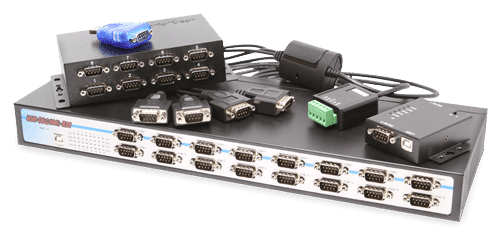











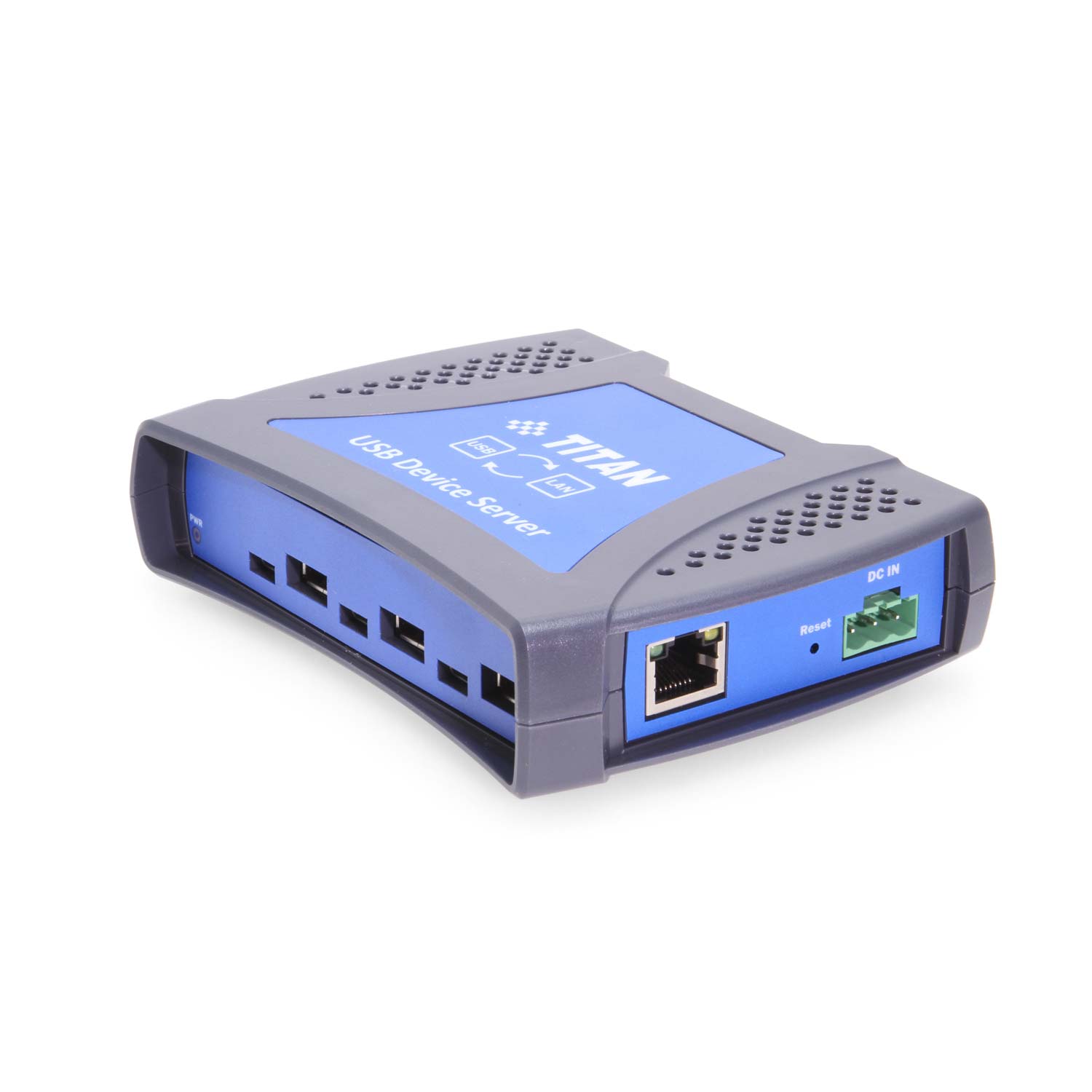
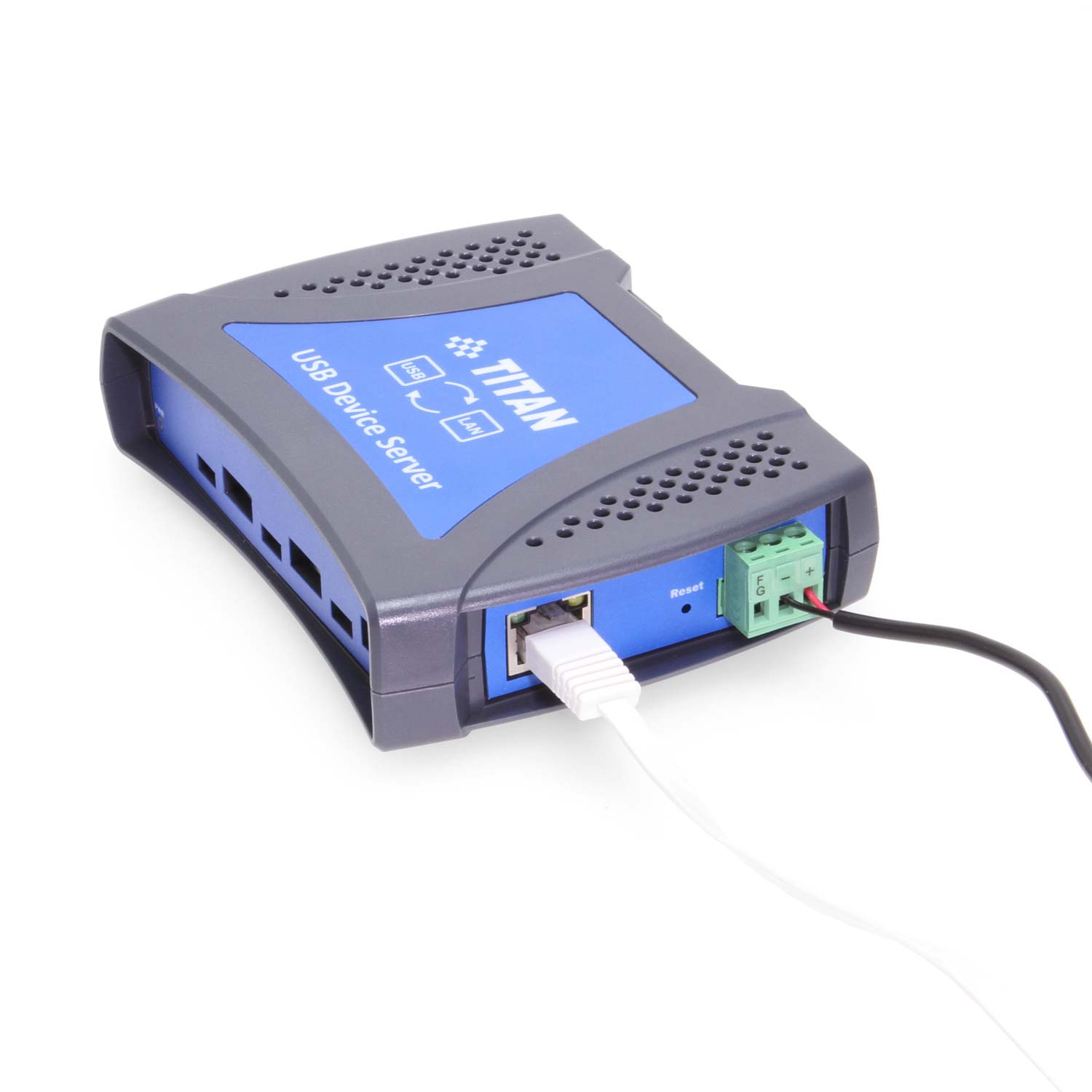


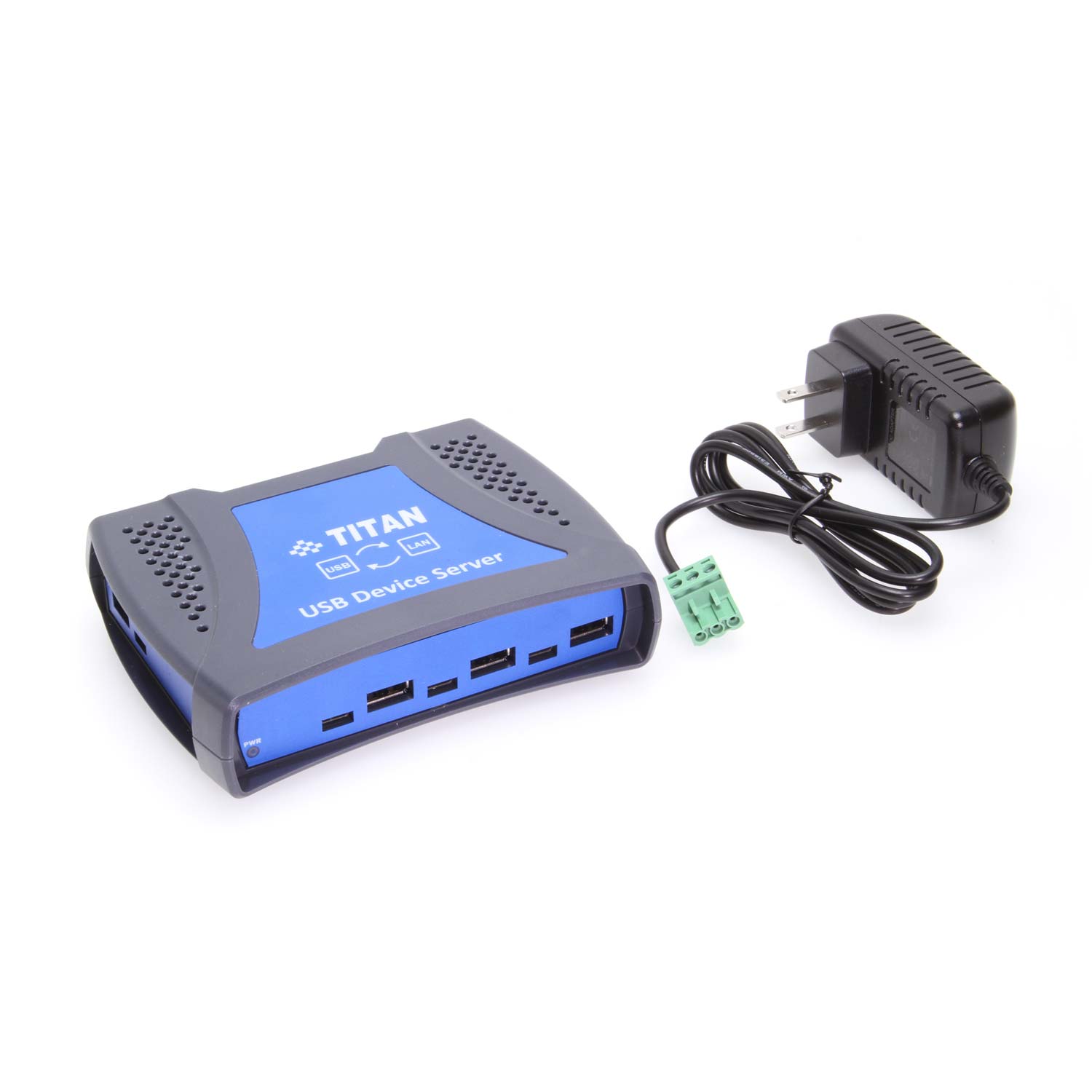

























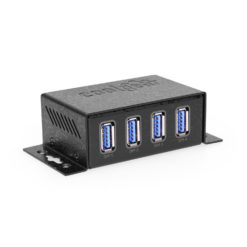



Redfred1 –
I needed a way to add a security dongle for my networked application running on a thin client. Works great… It was easy to setup and no issues so far. The 4 ports gives me some expansion capability for not much more than some of the single port units I saw.